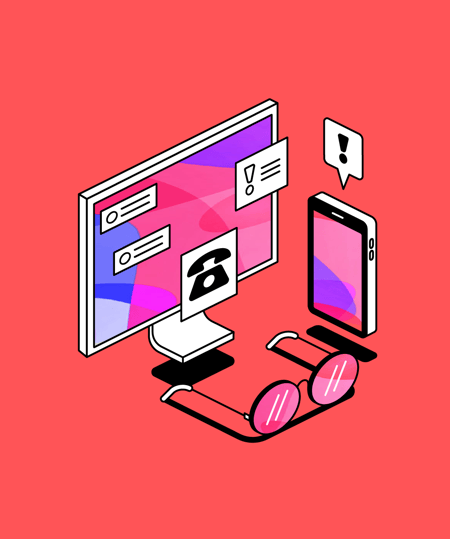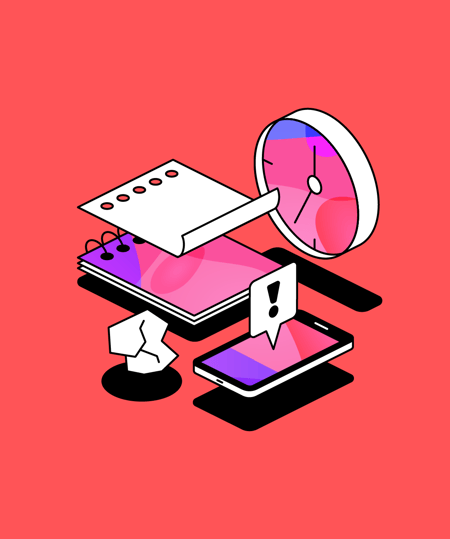How to build your institution's Accessibility Avengers
Evolving student demographics and a demand for inclusivity are putting accessibility high on the agenda. Find out how you can build your accessibility avengers beyond the disability services department.
 3 min read
3 min read
 Published: 9 Sep 2024
Published: 9 Sep 2024
 Jacob Goodwin
Jacob Goodwin


Across higher education, evolving student demographics, increased appetite for inclusivity, and institution wide budget constraints are all contributing to a complex environment.
One crucial area that demands attention is accessibility. And it's becoming increasingly clear, from issues trending across the entire US collegiate system, that this responsibility shouldn't fall solely on the shoulders of disability services professionals.
Why accessibility shouldn’t sit solely with disability services
Historically, disability services would support individual student requests for accommodations as they arose, providing the best solution to fit the circumstances. This is no longer sufficient.
As student demographics continue to shift toward a new majority learner, and fewer students disclose their disabilities, this approach places an undue burden on disability services professionals, leading to overstretched resources and delayed support for students.
Furthermore, it perpetuates the misconception that accessibility is solely about accommodating a minority of students with diagnosed disabilities.
Rather it should be recognized as a fundamental aspect of creating an inclusive learning environment, to the benefit of all learners.
Emerging trends and research only serve to highlight the urgency of the situation. The enrolment cliff, a predicted decline in student numbers, coupled with the growing proportion of students with disabilities (approximately 19% of undergraduates), places significant strain on resources.
A lack of advocacy among disabled students further exacerbates the issue, leaving a missing 65% of learners without the support they need. This can result in lower grades, decreased confidence, and even increased dropout rates.
A campus-wide approach to accessibility is essential.
It shifts the focus from individual accommodations to proactive measures that benefit all students. This includes implementing Universal Design for Learning (UDL) principles, promoting awareness and reducing stigma, and fostering a culture of inclusivity.
By embracing a collaborative model, institutions can create a more welcoming and equitable environment that empowers all students to succeed.
Building your institution’s Accessibility Avengers
Facilitating this shift requires the creation of a campus-wide culture of accessibility, buy-in and active participation from key stakeholders across the institution.
Here are 7 simple steps you can take to assemble your "Accessibility Avengers":
Identify key stakeholders: Begin by identifying individuals and departments that have a vested interest in accessibility. This may include faculty, IT, the Center for Teaching and Learning, Student Success, and Student Affairs, among others.
Highlight the benefits: Clearly articulate the benefits of a campus-wide approach to accessibility. Emphasize how it can improve student outcomes, enhance the institution's reputation, and create a more welcoming environment for all.
Share success stories: Showcase examples of how other institutions have successfully implemented UDL and improved accessibility. Highlight the positive impact on student engagement, retention, and graduation rates.
Address concerns: Acknowledge and address any concerns stakeholders may have. Provide evidence that proactive measures can actually save time and resources in the long run.
Provide training and resources: Offer training and resources to help stakeholders understand UDL principles and how to implement them in their respective roles.
Foster collaboration: Create opportunities for stakeholders to collaborate and share ideas. This can be done through regular meetings, workshops, or online forums.
Celebrate success: Recognize and celebrate the efforts of individuals and departments that are actively contributing to a more accessible campus. This can help to build momentum and encourage further participation.
How to collaborate with other departments to improve accessibility
Collaboration between departments is essential for creating a truly inclusive campus environment. And when different departments come together to improve accessibility, the outputs can be significantly amplified.
For example, disability services can provide training on UDL principles and the best assistive technologies to use in class.
Likewise, faculty can collaborate with course designers to ensure that their materials and assessments are accessible to all students.
Student success can share insights to identify and address any barriers that may be preventing students with disabilities from succeeding. Whilst IT and the Center for Teaching and Learning can come together to implement, and ensure effective usage, of any accessible technologies.
All departments can contribute to a culture of accessibility by promoting awareness, reducing stigma, and ensuring that their own policies and practices are inclusive.
In that light, improving accessibility on campus is not just the responsibility of disability services. Working together can create the inclusive environment required to benefit all students.
By embracing UDL principles, leveraging assistive technologies like Glean, and fostering a culture of collaboration, institutions can empower all students to achieve their full potential.
Accessibility is not just a goal, but a reality that can be achieved together.
More from Supporting Students
View All
 2 min read
2 min read
How to advocate for class recording in higher education
Advocating for recording in class can be challenging, so we're exploring how to navigate potential roadblocks. Tracy Blanchard from Louisiana State University and Allie Quinn from Mitchell Hamline School of Law share their experience of working with lecture recording accommodations.

 3 min read
3 min read
Using retention data to drive student success
By learning from their initial challenges, actively engaging stakeholders, and continuously refining their processes, United Tribes Technical College has made significant strides in improving first generation student success. Dean of Enrollment Management, Monte Schaff, tells us how they achieved it.

 2 min read
2 min read
Understanding executive functions
Executive function is a set of essential skills that impact our ability to learn, work, and navigate everyday life. Here, our Learning Lead, Sammy, explores how these skills impact student life, from academic performance to social interactions and emotional wellbeing.





